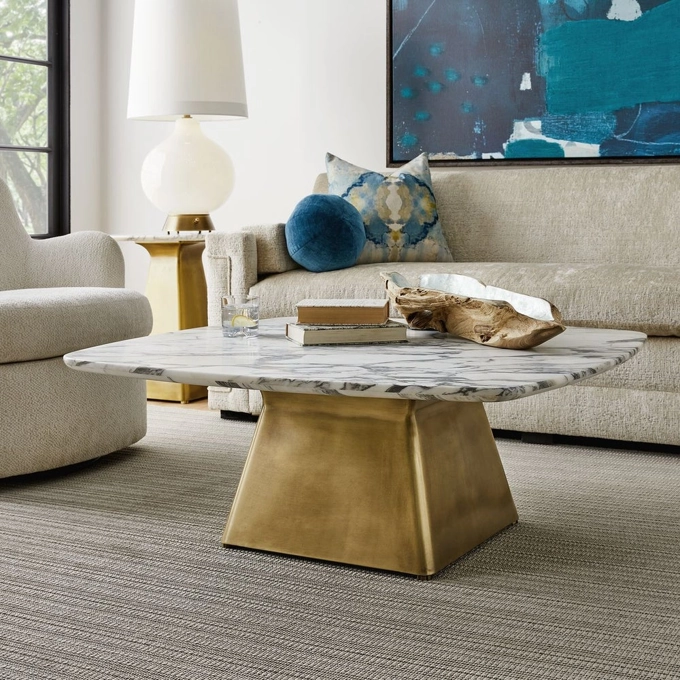
Uttermost offers home accents, mirrors, alternate wall decor items, clocks, lighting fixtures and area rugs at competitive prices. Their goal is to deliver stylish home accessories at an economical price point.
Bring Mid-Century Modern charm into your living space with this beautifully hand-crafted accent table. Featuring an antique gold finish over solid cast aluminum for a pleasing silhouette.
Tables
Use of tables to present data in an organized format is a popular practice. When used properly, they can make information easier for readers to comprehend and read; however, improper design could confuse readers or cause accessibility issues with accessibility tools.
When creating tables, the ideal approach is to utilize Visual Editor or Code Editor’s toolbar and understand its operation. While these tools may help quickly insert a table, be aware that they only interact with LaTeX code.
Text in tables should typically be centred; LaTeX provides the hline command to do just this. For instance: “hline c c c” tells LaTeX there are three columns with text to be centred within each column.
An important element of any table is ensuring it contains an appropriate title. The title should clearly identify its contents and purpose while providing information about its structure or any special formatting required.
A well-structured table can assist both sighted people and those with limited or no vision to comprehend it easily, while providing additional assistance to blind or low-vision users. Furthermore, an auditorily understandable version may make the table accessible via screen readers.
Tables can be an incomprehensible format to read when they contain numerous rows and columns, especially when they contain many rows that cannot fit onto one page. To ease the difficulty, headers and footers can help provide relief by repeating information at the top or bottom of each section of a table. They may also come in handy when there are too many rows that won’t fit.
By selecting Table > Convert Rows To Header Or Footer, any row in a table can be easily converted to either headers or footers for easier scanning, helping those using screen readers or having difficulty with vision to do their jobs more quickly. Sorting rows may also make finding data simpler for readers.
An effective way to organize a table is to place frequently used data in the first half, followed by less frequently utilized items on the second. This will make the table more compact and easy to read; additionally, making your table scrollable should it grow too long for its page is also wise.
Make a table more accessible with th> tags in header cells. This way, screen readers will announce the names of these headers when someone scans the table; this can be invaluable when trying to locate specific information; for instance if you were trying to determine how many Juniors attended Fall 2008 term classes then scanning down into Junior cell would reveal this answer: 3571 were present – saving both time and effort when looking up figures like trading platforms, logistics services or newsgathering!
Table Lamps
Table lamps are the fastest way to add designer style into a space. Boasting an extensive variety of styles and colors to choose from, table lamps provide accent lighting that adds a fashionable flair. Table lamps can play an essential part in every room of the home from console tables to sideboards and built-in bookshelves as well as bedside tables; an elegant pair makes a statement in foyers or entryways while sleek nightstand lamps add sophistication in bedrooms.
People typically envision table lamps as classic forms: base, stem and shade. Although there may be variations on this classic form, one of the key factors when selecting a lamp is bulb type and color: for instance a bright white LED provides energy efficiency and long lifespan while warm amber emits an ambient glow to help ease transition to sleep.
Lamps come equipped with various bulb types and shades, but also come equipped with different materials that add depth to their look. Ceramic and glass lamps add contemporary flair with their clean lines and sleek finishes; bronze iron and metal table lamps offer traditional or rustic interiors an opulent aesthetic; while bronze and brass table lamps are ideal in transitional settings; as they can complement both vintage and modern furnishings perfectly.
Consider selecting a table lamp with decorative sculptural details as an updated take on traditional design. A fluted vase or columnar silhouette work great for modern spaces; pair these designs with minimalist and industrial styles for optimal effect. A bronze-iron lamp with geometric base and beige linen shade also makes a wonderful transitional choice and features dual pull chains to switch between nightlight and full illumination modes.
Vintage-inspired gourd lamps make an excellent accent piece for rustic or country dining rooms, featuring a rotund base that tapers toward its top for maximum studded effect. Additional classic options for these rustic environments are cane, tweed and ceramic lamps.
Considerations when designing a table lamp include its shape of base and style of shade. Classic drum and empire shades are popular choices among both contemporary and traditional designs; box pleat, bell or pagoda shades offer more formal lighting effects; while an eye-catching curved glass or crystal lamp makes an excellent addition to transitional or contemporary interiors.
Table lamps can have an enormous effect on the overall aesthetic and feel of any room, so selecting one that complements your existing furnishings is crucial to creating an aesthetically pleasing space. When selecting your new table lamp, be sure to pair it with complementary pieces such as mirrors or console tables to enhance its effects even further.

